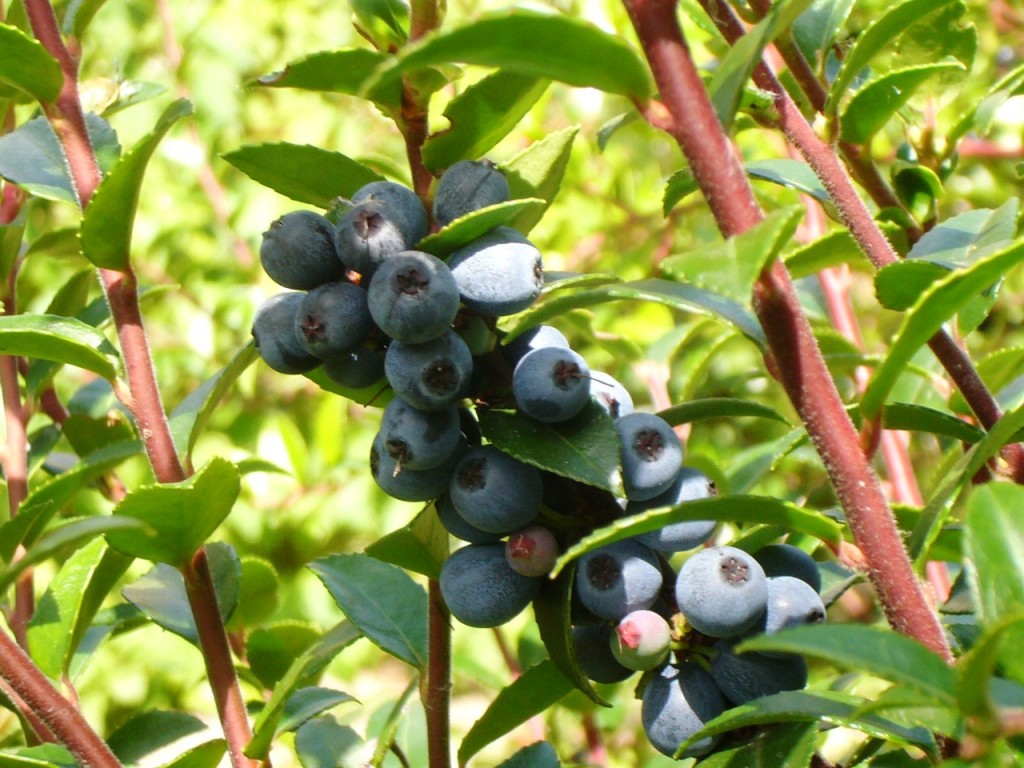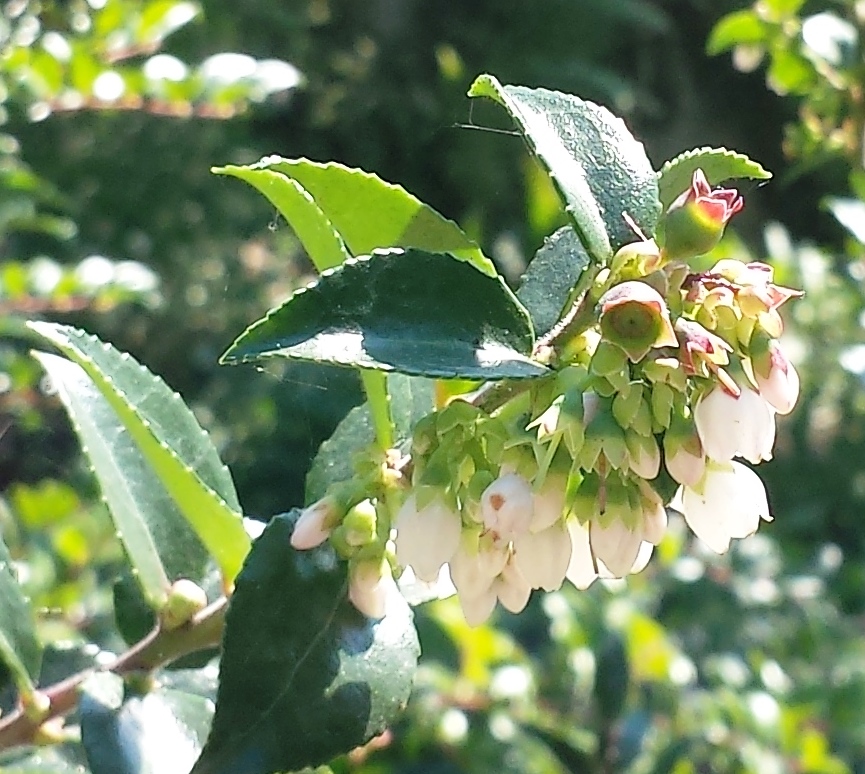Vaccinium ovatum “Thunderbird” (Huckleberry)
Vaccinium ovatum “Thunderbird”, also known as huckleberry, has to be one of the best year round native evergreens for the Pacific Northwest garden and yet you hardly ever see it in the urban landscape. This is surprising since it always looks good, is tolerant of almost any conditions, and produces delicious huckleberries in the fall.

I admit that with its small dark green and glossy leaves the huckleberry bush can tend to blend into the forest landscape where you usually see it. Unless it’s in bloom or loaded with berries you might walk right by vaccinium ovatum without noticing its striking contrast of dark green leaves, reddish woody stems and yellow-into-bronze colored new growth.

The pinkish-white flowers look like upside down urns, much like the flowers of Arbutus unedo and Arbutus marina.

Forage in your own back yard
In fall the sweet and tart dark blue berries are ready to harvest. They are nice and firm even when ripe so they work really well in scones and pancakes. Or you can just eat them by the handful.
Vaccinium ovatum tolerates almost any soil, sun, shade, drought, lots of rain, frost, and snow. If you water it you’ll get more blooms and bigger berries. This September my little huckleberry hedge is showing new growth, blooms and berries all at the same time.
It can grow as large as 6 feet tall by 7 feet wide, but with careful pruning can be contained to 3′ x 4′. Throw some coffee grounds in the soil where it grows and watch it go.